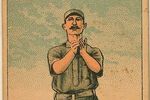I Blog, You Should Consider It, Here’s Your Invitation!
I have found that the rewards of blogging have been inspiring and engaging. I have had my thinking challenged, my perspective is wide and I appreciate what others have to say and ask in regards to what I am sharing. Through this type of online conversation I am inspired, my thinking is challenged and…









